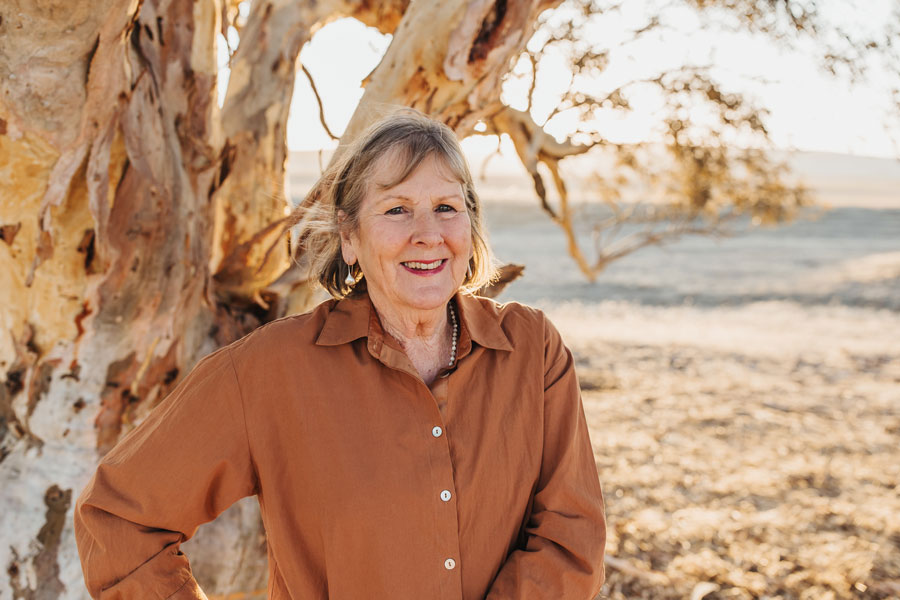Key points
- Talk about succession early, often and openly
- Listen to people’s wants and needs, especially those of the exiting parties
- A trigger for succession should be identified
- Use farm family facilitators and succession experts to guide positive discussions
- Use solicitors, accountants and bank managers to draft agreements
- View succession as a business transition
- Outcomes should be fair and equitable, not necessarily equal
- Circumstances can change and succession plans along with them, so keep an open mind
Navigating succession can be difficult – but farm family facilitator Judy Wilkinson says it is very much worth the effort, leading to more secure and successful businesses and relationships
Judy Wilkinson draws on a wealth of personal and professional experience to guide people through the often-problematic farm succession process.
In a career spanning 25 years as a farm family facilitator, she has consulted directly with families and presented on the topic at GRDC Updates and other events. With Lyn Sykes, another succession specialist, she also co-wrote GRDC’s first succession guides, which are still in circulation.
But despite being in this consultancy profession since before the term ‘succession planning’ was coined, Judy continues to be inspired by the people she helps build more sustainable businesses and relationships.
“It’s rewarding,” she says. “Some of the strongest businesses are those that have family members all working together, supporting each other. I love driving into a property where you can see this happening. It needs a fair bit of work, but it’s fantastic when you get there.”

Judy Wilkinson is a farm family facilitator, she consults directly with families to create informed succession plans. Photo: Nadinne Grace
Farm as a business
Raised in a farming family, Judy and her husband managed a 5000-hectare property across the Hummock Range in South Australia’s mid-north. The arrangement – being managers for owners who lived elsewhere – informed her approach to succession planning.
She says that having business-like structures such salaries, strategic plans and ongoing risk assessments already in place will help when farm succession plans are drawn up.
Instead of the attitude that ‘our money’s in a joint account with mum and dad’, there need to be strategies in place to ensure people are being paid fairly for the work they do.
“And if older generations are thinking ‘you’re here to work and one day this will all be yours’, that’s far too open-ended.” Judy is very clear about the importance of making a business look like a business and not a mum-and-dad bank account.
In her workshops and family consultations, Judy helps people build a clear picture of the business and individual roles within it.
This can be challenging for families that have never viewed their work in this way or may have never discussed it. But she says it is an essential first step in a succession planning process that can take many years and hinges around clear, open and positive communication.
Wants, needs and triggers
Succession should constantly be on the agenda and discussed regularly and as positively as possible, she says. Talks should be inclusive and use language such as ‘let’s make a plan’ or ‘let’s think about the triggers that might start the process of succession’ so people will be prepared when it happens.
As part of this open, clear and ongoing communication, it is important for people to articulate honestly their wants and needs, Judy says. This applies to both the older generation that will leave the business and the younger generation that may (or may not) be taking over.
For the older generation, the first step is to identify a trigger for exiting. This could be something planned such as an age or another milestone, but it could also be an unexpected event such as drought, illness or death.
When this trigger is pulled, she says, it is important that those leaving the business have three factors covered: money to live on, somewhere to live, and something to do.
“It sounds simple but it’s a lot to organise, especially if you’re doing it as a couple,” Judy says. “You have to decide what the next part of your life is about.”
Life after farming
Allocating enough money for retiring growers to live on can be challenging if they have never previously drawn a regular wage.
“I’ve asked people how much they think they’ll need and they’ll say something like, ‘I think we can manage on $30,000,’ and I’ll say, ‘no, you can’t’.”
In Judy and her husband’s case, their trigger was a date, based on a calculation made 10 years prior about when they would have earned enough money to buy a house. This ticked off the ‘somewhere to live’ category. The ‘money to live on’ and ‘something to do’ were also accounted for.
Younger generations
For the younger generation, it is important they articulate their wants and needs both on and off the farm, she says. “Don’t just assume to know what your children want, or what they’re capable of,” she says.
Judy says all family members should be involved in these discussions, including those who are not invested in the farming business but who may still feel a deep connection to the land.
The reason I say ‘include everyone’ is because exclusion is an incredibly tough tool to deal with after it happens,” she says. “And if you exclude people you then risk dealing with angry people, which makes communication difficult.
Third parties
Farming families should not be expected to handle these discussions without support. Judy says an impartial third party such as a succession specialist can help guide the talks and create a safe space for open and honest dialogue.
“I’m really only there to organise the conversation, to make sure it’s positive and that you come out with four or five things to action as the next steps,” she says. Those might include, for example, updating wills, making an agreement about wages and taking an agreed business structure and/or succession plan to a solicitor and accountant to formalise.
“And the other thing I encourage is regular meetings to make sure everybody’s informed,” she says. “So an agenda has to be put in place that provides an opportunity to talk about business in a business setting.”
Talk early and often
Regular ongoing discussions are important because even when a succession plan has been made, it’s not set in stone, Judy says. “People can change their minds about their wants and needs, or changing circumstances, such as a drought, business expansion or the birth of a baby, which could speed up, slow down or alter the course of a succession plan.”
Addressing these ‘speed humps’ honestly, she says, is critical and made easier if the dialogue around succession is already established. Judy stresses that it is never too early to open the dialogue. This is because it is easier to talk about different scenarios, such as those speed humps, hypothetically before they happen rather than when they are on the doorstep.
While the succession process may seem onerous at the outset, it does not have to be negative, she says.
“It is just one of those things you have to deal with in your farming life, especially if you’re going to include your family, or your if your family has included you.”
Resources: A guide to succession: Sustaining families and farms, Succession planning fact sheet.

























































